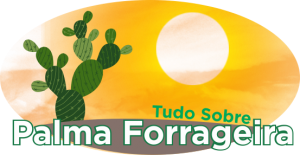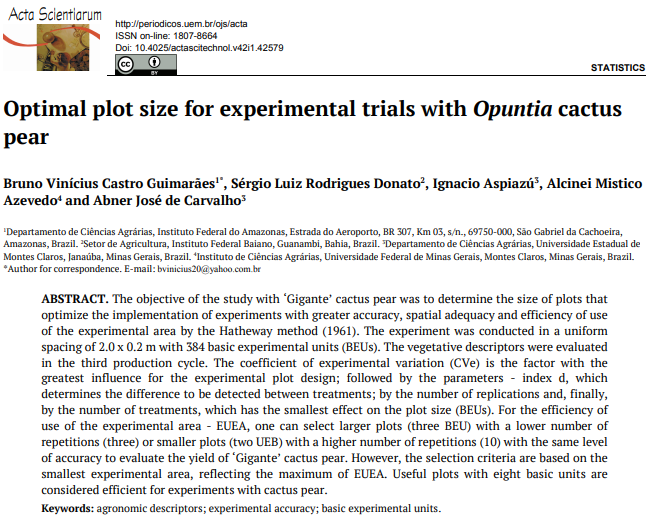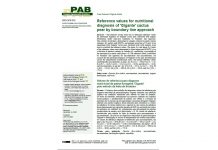The objective of the study with ‘Gigante’ cactus pear was to determine the size of plots that optimize the implementation of experiments with greater accuracy, spatial adequacy and efficiency of use of the experimental area by the Hatheway method (1961). The experiment was conducted in a uniform spacing of 2.0 x 0.2 m with 384 basic experimental units (BEUs). The vegetative descriptors were evaluated in the third production cycle. The coefficient of experimental variation (CVe) is the factor with the greatest influence for the experimental plot design; followed by the parameters – index d, which determines the difference to be detected between treatments; by the number of replications and, finally, by the number of treatments, which has the smallest effect on the plot size (BEUs). For the efficiency of use of the experimental area – EUEA, one can select larger plots (three BEU) with a lower number of repetitions (three) or smaller plots (two UEB) with a higher number of repetitions (10) with the same level of accuracy to evaluate the yield of ‘Gigante’ cactus pear. However, the selection criteria are based on the smallest experimental area, reflecting the maximum of EUEA. Useful plots with eight basic units are considered efficient for experiments with cactus pear.
Keywords: agronomic descriptors; experimental accuracy; basic experimental units.





